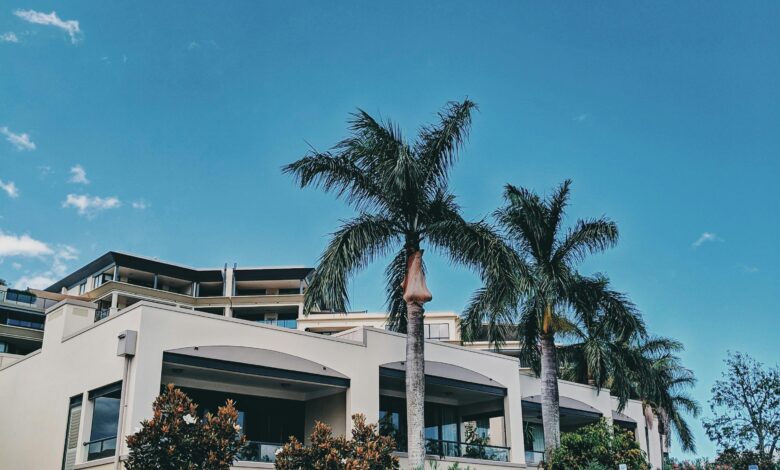How to Add Value to Your Home with Landscaping

Landscaping is one of the most effective ways to enhance your home’s curb appeal, functionality, and overall value. A well-designed outdoor space not only creates a welcoming environment but also increases your property’s marketability and resale value. According to real estate experts, homeowners can recover up to 100-200% of their landscaping investment when selling their homes. In this article, we’ll explore practical strategies for adding value to your home through thoughtful and strategic landscaping.
Why Landscaping Adds Value
Before diving into specific tips, it’s important to understand why landscaping is such a powerful tool for increasing home value:
- First Impressions Matter : The exterior of your home is the first thing potential buyers or visitors see. A beautifully landscaped yard sets a positive tone and creates an emotional connection.
- Curb Appeal Boosts Property Value : Homes with attractive landscaping sell faster and at higher prices compared to those with neglected yards.
- Outdoor Living Spaces Are in Demand : Modern buyers want functional outdoor areas for relaxation, entertainment, and recreation.
- Energy Efficiency Benefits : Strategic planting can reduce heating and cooling costs by providing shade or acting as windbreaks.
- Low-Cost, High-Impact Improvements : Compared to major renovations, landscaping projects are relatively affordable yet yield significant returns.
Key Strategies to Add Value Through Landscaping
1. Enhance Curb Appeal
- What It Is : Improving the visual appeal of your home’s exterior.
- Why It Matters : Curb appeal is often the deciding factor for buyers. A well-maintained front yard signals pride of ownership and care.
- How to Do It :
- Plant Flowers and Shrubs : Add colorful flowers, evergreen shrubs, or seasonal plants near the entrance to create warmth and vibrancy.
- Upgrade Walkways : Replace cracked or outdated pathways with stone, brick, or pavers for a polished look.
- Install Lighting : Use solar-powered lights along walkways, driveways, and around trees to highlight features and improve safety.
- Refresh the Front Door : Paint the door, update hardware, and add planters or wreaths for a welcoming touch.
2. Create Functional Outdoor Living Spaces
- What It Is : Designing areas that extend your living space outdoors.
- Why It Matters : Buyers love homes with usable outdoor spaces for dining, entertaining, or relaxing.
- How to Do It :
- Build a Patio or Deck : Install a patio made of stamped concrete, flagstone, or wood decking to create a versatile gathering area.
- Add Seating : Incorporate comfortable outdoor furniture, fire pits, or pergolas to encourage lounging.
- Include Shade Structures : Install awnings, umbrellas, or retractable screens to make the space usable year-round.
- Consider an Outdoor Kitchen : For maximum appeal, include grills, sinks, or mini-fridges in your design.
3. Invest in Trees and Greenery
- What It Is : Planting trees, hedges, and other greenery to beautify and protect your property.
- Why It Matters : Mature trees and lush greenery increase privacy, reduce noise, and provide natural insulation.
- How to Do It :
- Plant Shade Trees : Strategically place deciduous trees on the south or west side of your home to block summer sun while allowing winter light.
- Use Privacy Hedges : Evergreen shrubs or bamboo fences can act as natural barriers between neighbors.
- Layer Plants : Combine tall trees, medium-sized shrubs, and ground cover for depth and texture.
- Choose Low-Maintenance Options : Opt for native plants that thrive in your climate and require minimal upkeep.
4. Improve Drainage and Grading
- What It Is : Ensuring proper water flow away from your home to prevent damage.
- Why It Matters : Poor drainage can lead to foundation issues, mold growth, and costly repairs—red flags for buyers.
- How to Do It :
- Install French Drains : Redirect excess water away from the foundation using underground drainage systems.
- Grade Your Yard Properly : Ensure the ground slopes slightly away from the house to avoid pooling.
- Use Rain Gardens : Create shallow basins filled with water-loving plants to manage runoff naturally.
5. Incorporate Hardscaping Features
- What It Is : Adding non-living elements like stone, wood, or metal to complement softscapes (plants).
- Why It Matters : Hardscaping adds structure, durability, and aesthetic appeal to your landscape.
- How to Do It :
- Build Retaining Walls : Prevent soil erosion and define levels in sloped yards.
- Add Fencing : Choose stylish fencing materials like wrought iron or cedar for security and privacy.
- Install Water Features : Small ponds, fountains, or bubbling rocks add tranquility and sophistication.
- Use Decorative Stones : Mulch beds, gravel paths, or boulders can break up monotony and enhance visual interest.
6. Focus on Maintenance
- What It Is : Keeping your yard clean, trimmed, and healthy.
- Why It Matters : Neglected landscapes detract from your home’s value and give the impression of disrepair.
- How to Do It :
- Mow Regularly : Keep grass neatly trimmed and edges defined.
- Prune Shrubs and Trees : Remove dead branches and overgrowth to maintain shape and health.
- Weed Beds : Eliminate weeds to keep flower beds looking tidy.
- Pressure Wash Surfaces : Clean driveways, patios, and siding to restore their original appearance.
7. Maximize Space with Smart Design
- What It Is : Using every inch of your yard efficiently, regardless of size.
- Why It Matters : Even small yards can feel spacious and inviting with clever design techniques.
- How to Do It :
- Vertical Gardening : Use trellises, wall planters, or tiered gardens to maximize limited space.
- Zone Your Yard : Divide the area into distinct sections for dining, playing, gardening, etc.
- Use Multi-Functional Furniture : Benches with storage or foldable tables save space without sacrificing utility.
- Optimize Pathways : Curved or meandering paths make compact spaces feel larger.
8. Stay Within Your Budget
- What It Is : Planning projects that align with your financial resources.
- Why It Matters : Overspending on elaborate designs may not yield proportional returns.
- How to Do It :
- DIY Where Possible : Tackle simpler tasks like planting flowers or laying mulch yourself.
- Phase Projects : Spread out expenses by completing improvements over time.
- Prioritize High-Impact Areas : Focus on visible zones like the front yard or backyard entertaining areas.
- Shop Smart : Look for sales, discounts, or reclaimed materials to cut costs.
Common Mistakes to Avoid
- Overplanting : Too many plants can overwhelm a space and increase maintenance needs.
- Ignoring Maintenance : Beautiful designs quickly lose value if they’re not properly cared for.
- Choosing Trendy Over Timeless : Stick to classic styles that appeal to a wide range of buyers.
- Neglecting Functionality : Prioritize usability alongside aesthetics to maximize ROI.
- Skipping Professional Advice : Consult a landscaper or designer for complex projects to ensure quality results.



